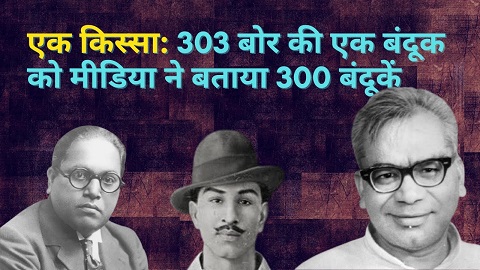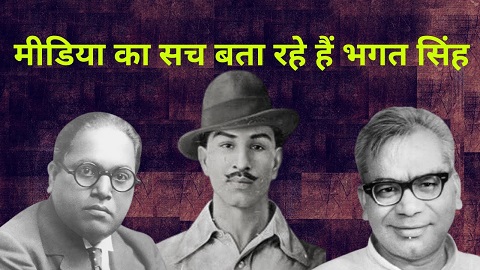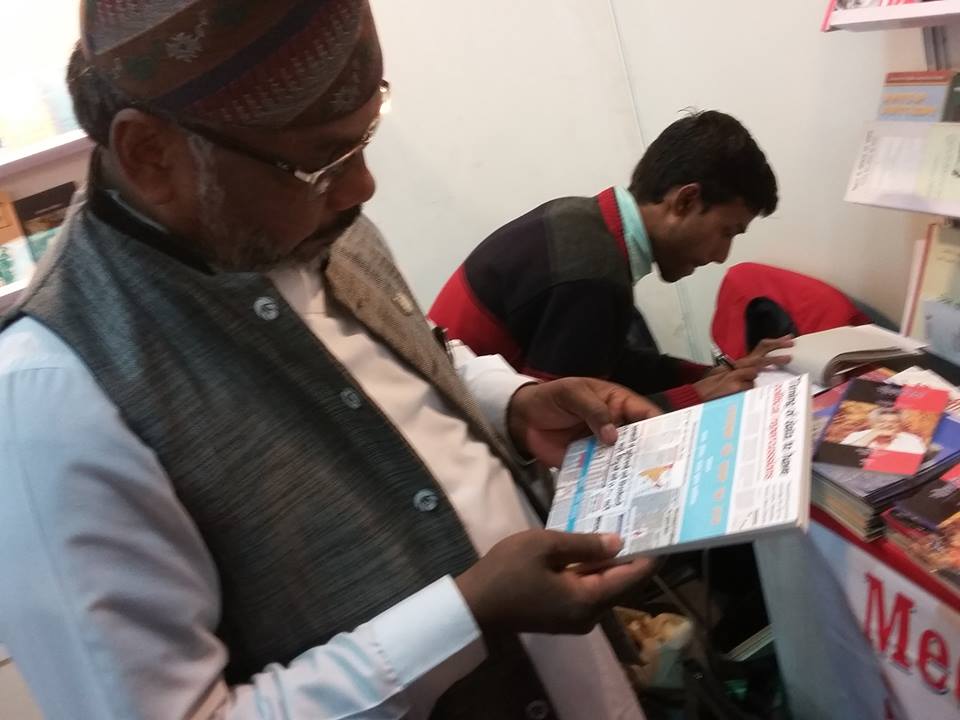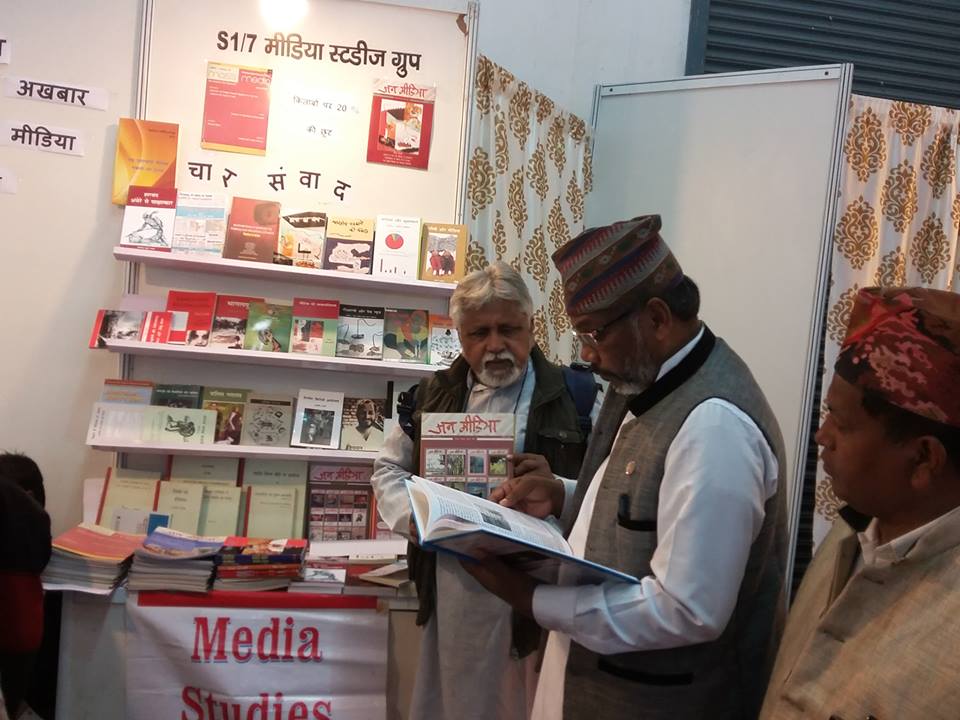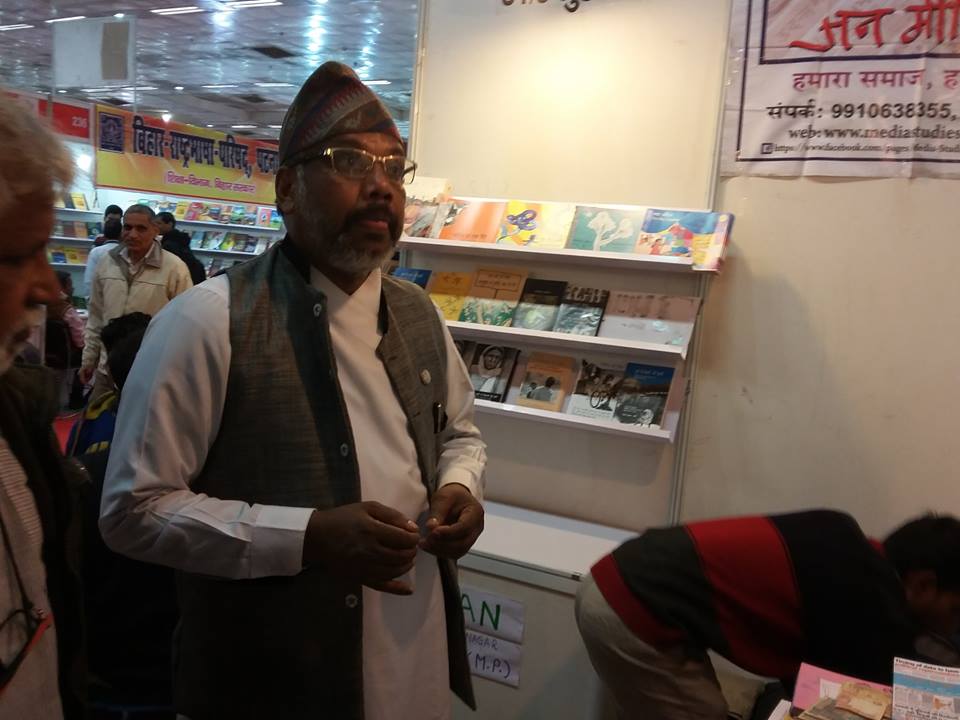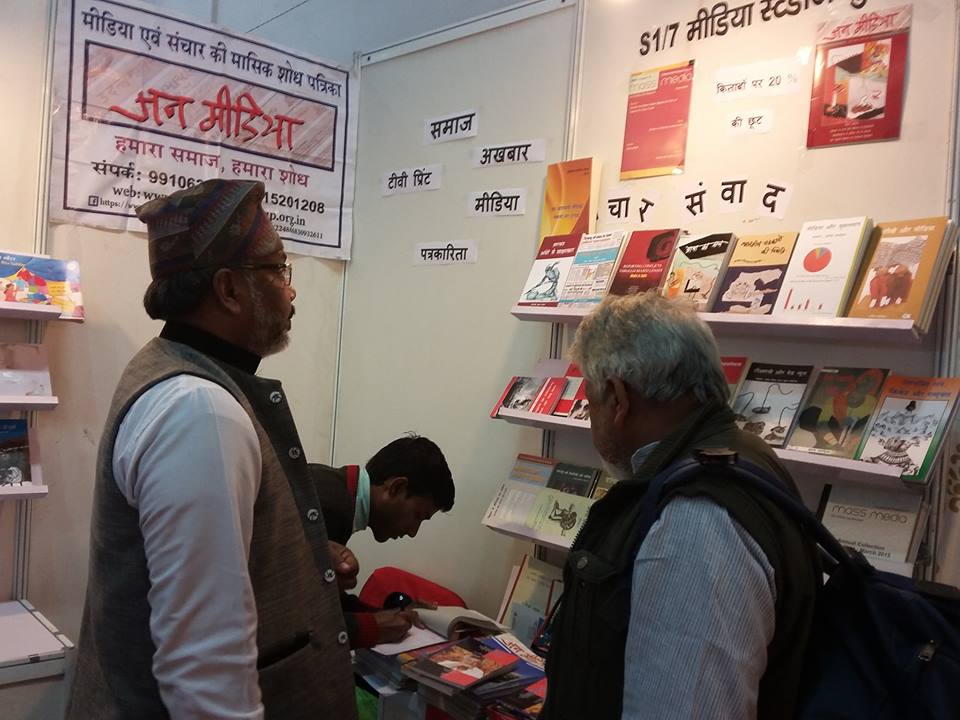P Sainath during his DS Borker Memorial Lecture on Aug 24 at India International Centre, New Delhi
I begin by whining about how alarming the word vision is. I am certainly scared by the words like vision. The reason why it scares me is it’s a very lofty and vague and I don’t remember how many people have vision who ceased to be my friends. My own crude reaction to anyone sharing vision with me..
2047 is not all that far and I would use the word hope and vision interchangeably both. We can hope to see a vision for 2047. It could depend a lot on what we do in 2017. So in order to have a vision or hope of what it should be, we need to have an unromanticised view of where we are and what is. So 2047 and 2017 are certain dates. I will take you back to an extremely important dates for someone like me and I concur with their vision that led to 1947. It remains only partially realized, not fulfilled and extremely important. One thing I do a journalist and have been doing for past 20 years –is I am recording interview of the last living freedom fighters and it’s such a moving experience. Two weeks ago, I was at village of Nana Pate, the first man to declare a provisional underground government under the British in Maharashtra. Nana Pate was the leader of the uprising against the British. In a commemorative function I saw about six dozen people sitting in the corner of a hall filled with young students. They turned out to freedom fighters in their 90s. Mahadev Mane, Babu Lal and a whole heap of them. Do you know who these people were? They were fighters at the Toofan Sena or the Whirlwind Army that believed in direct action and took the British head on.
Looking at Babu Lal today, one can even imagine that they attacked a Bombay-Karad express and looted the payroll meant for British sarkari officials. This money was distributed among the starving peasantry and farm labourers in a period of drought and famine. When I met Babu Lal and asked him about the attack on the train, he said, “We had not looted anything, whatever British looted we simply brought it back.” All those who I interviewed have similar vision in mind. When I pressed a question what did they fight for, they simply answered- freedom from these alien rulers and a just society. They had this vision.
So coming back, what we have now. As I said we need to have an unromanticised view of where we are today if we want to know what should be. At one side we are celebrating (25 years of economic reforms 1991) and on the other there are levels of inequality which is criminal. We have generated levels of criminality of inequality. A range of fanciful articles are being written about my fellow Telagu PV Narsimha Rao. Some unknown virtues are being found out which I never knew he had and he never knew he had.
The levels of inequality we have generated today is reflected in the Forbes billionaires data, you can look at Oxfam’s analysis of Credit Suisse world wealth report where India is figured at page no 149. The data shows between the year 2000 and 2015, India achieved the distinction of having the fastest growth in inequality. There are nations more unequal than us but the rate at which we grew is astonishing. The rate at which the growth of inequality took place in large nations like United States- 1 per cent of the population owns 37 per cent of the wealth, in India it’s 53 per cent. In 2014 it was 49 per cent and which grew to 53 per cent in India. The rate at which we grew in last 16 years is stunning.
We have built new inequality reinforcing the old. There are many old inequalities like caste, untouchabilty and stuff and we have built on those or deepen those to generate them further. We are so cut off from our own society because our media cocoon us where they certainly don’t know what to do when something like Una happens. Una is a spectacular breakdown of a process which for a very long time is on and on. It was not a one of an incident, it was a breakdown of a completely unsustainable process of exploitation and inequality. By the way, Untouchablity is not a social evil, it’s far more than that. Untouchabilty is a highly sophisticated strategy of ensuring ourselves a permanent and perpetual pool of cheap and demoralized labour.
Of course, today what do we have, we have Swachh Bharat, based on septic tanks. I am very happy that this year Bezwada Wilson ( a renowned campaigner against manual scavenging) honored Magsaysay prize and he said at Jantar Mantar just a day before the anniversary of Dr BR Ambedkar that of 1337 safai karamchari’s death in past few years, the vast majority have occurred in septic tanks. So this man is speaking to the Bhim Sena came all across covering 618 villages to Delhi and received no media attention at the national Capital. They got a few seconds coverage just because students from NIIT Srinagar were stage a protest nearby them at Jantar Mantar. Manual scavengers are estimated to be 2 lakh by government and 3 lakh by Wilson’s organization. According to government it takes Rs 3 lakh per scavenger to rehabilitate and take him out from this menial job and give new occupation. So let’s take this high-end figure, Rs 3 lakh per person multiplied by 3 lakh persons is equal to 9000 crore. This is about what Vijaya Mallya owes the banks and remember he’s offered to return half. I think government should have a PPP (Private-Public partnership) with Mallya and rehabilitate at least half of the manual scavengers.
So you are approaching 2017 and a quarter of a million are cleaning human excreta with their hands. What sort of nation are we? What sort of society we are? Here is my vision- I want an India willing to look into a mirror and see ourselves as caste-ridden, discriminatory and an unjust society we are. I don’t want for 2047, I want it today. You can’t have vision if you cling willing to myopia. After 70 years, Dalits-not just scavengers- are forbidden in villages from using common graveyards, pathways, common grounds, common properties and so on. Arbitrariness is the name of the game. A game of holding people down. Calling it a social evil is just a part of it, it’s not whole of it. Once about 20 years ago one Chunni Lal Jatav- one of the survivors in Dalit upsurge in Maharashtra told me that the learned judges interpret the law and our havaldar at ground reads it his own way.
By extending the beef ban the entire backward communities have been affected in Maharashtra and the cattle market prices in the state has fallen by 60 per cent. The reason is that no one can buy or sell and people are terrified. Who are these cattle dealers? They are other backward castes. And now when Maradwada faces drought how the Marada farmers would provide water to half a dozen cows when it’s not being provided to the family members. So farmers watch their cows die when he can’t earn a penny by selling it in cattle market. Similarly, the Kohlapur chappal industry also suffers after trucks carrying cattle have continuously been torched. So amid the RSS is active, BJP passing laws and VHP and Bajrang Dal are also setting vehicles on fire. So if beef ban is imposed the entire industry-consisted of Muslims, OBCs, Dalits and Maratha farmers- is suffering.
When it comes to taking responsibility, BJP always says it’s Bajrang Dal- an independent group and has no connection with the BJP. I do agree that these two are different organizations. The BJP is an RSS on politics. The VHP is the BJP on steroid. The Bajrang Dal is the VHP on crack.
None of these clowns meddle with the issue- how important and central are the cattle in the rural economy. How many sections of our rural society are directly hit. This is for last 25 years, regardless of which government has been into power, livestock population in this country has declined and the worst decline has been of desi cows (9%). So in the era we can call both the governments as desidrohis.
The inequality which is growing, I am looking for an India by 2047 where the Dalits will have won the greatest battle for human dignity on the earth today. Amid a gated –culture in our residential complexes is fast spreading; already excluded Dalits are being more alienated. When drought-hit farmers are leaving their farms behind and working as construction labourers here at our Metro cities, can more astonishing than this could happen? Look at the number of editorials written attacking the ban on IPL matches in drought-hit Maharashtra. I am a great cricket fan. I am a cricket fanatic and by the way I don’t think IPL is cricket. Media criticized the Bombay High Court’s observation where it said that how could water be spent on matches when people are struggling for water. No one mentioned that in Marathwada where a poor person is spending 45 paisa to 1 rupee per litre of water, 24 beer factories are getting water in the same Marathwada region at 4 paisa per litre. And remember I am not mentioning the mineral water factories, the mafia which exists there. I am just mentioning the liquor factories. These are the new inequalities. Look at what your constitution promises. Look at what your struggle promised.
I also want an India that does not lie to itself. Look at yesterday’s newspaper. The third commission discovers that Rohith Vemula was not a Dalit. The local tehsildar had found that he was a Dalit. The District collector had found that Rohith was a Dalit. But the commission was nonetheless set up to find out he was not Dalit. This is a nation that lies to itself. Why in India we need three commissions. Do you know in Maharashtra on farmers’ suicide has had 13 committees. Once I was made a member of an expert committee on BPL families and It was suggest to the government that all female-headed families should automatically be considered as BPL. One minister argued how’s it possible?.
Anyone can transfer the ownership to the woman of the house and claim the BPL. Usually NCRB (National Crime Record Bureau) numbers are out on June 30 every year and look at the data on farmer’s suicide which is on similar set of methodology is being used for last 19 years. Under the definition of Census, the main cultivator who has operated a piece of land for 180 days or more is called a farmer. Suddenly the entire game changed in 2014 farmers’ suicide data. No of farmer’s suicide fell by half despite the no of total suicide case went up. How it happened? It happened by changing data heads. They created contract farmers i.e. tenant farmers, created agricultural labour as separate category. In India tenant farmers have no records. 95 per cent of the farmers are tenants and they are the most vulnerable section to suicide and they don’t even get bank credits as they don’t have land patta on their names. On one side government has created a category Tenant Farmers and 95 per cent of them have no proof that they are tenant farmer so that number goes to agricultural labour. You know what the data showed last year? ‘Far more agricultural labourers committed suicide than farmers in India.’ The claim that no union of agricultural workers has made is because tens of thousands of tenant farmers who cannot be counted as farmers because you have created that category. As per my information, this year despite all these games, the main farmers category has gone up by 40 per cent. Government is simply struck with it and don’t know how to handle it.
By the way, more and more states are declaring that India is best place for the farmers. 12 states and 6 Union Territories have declared zero farmers’ suicide. Nowhere in the world is that possible. In 1997, there was not a single state claiming zero suicide. States which had 15000 farmers suicide in past 10 years, have been declaring zero since are Chhattisgarh and West Bengal. These are states claiming millions of farmers in the states. How is it possible that number of total suicides is going up and farmers’ suicide is declining. There have been a discrimination on the level of counting by police as the police do not go by the census, they go by what the DSP has said. Their manual is different.
90 per cent of woman farmers are excluded as they are not considered as farmers. There is no land in their name. In case of any woman farmer’s suicide, first thing the cop says ‘patta dikhao’. If there is no patta, you are not a farmer. Do you know which is the best place to be a woman farmer? Haryana and Punjab. There are no woman farmers’ suicides because they don’t admit woman can be a farmer. In woman farmers’ category the numbers are blowing up. Its exploding. Farm girls in Andhra and Maharashra are pulled out of schools and colleges and when commit suicide; it’s counted as student’s suicide. We are not ready to recognize woman as farmer and farmer as woman. This is a nation that lies to itself and there are 13 commissions on inquiring farmers’ suicide and unfortunately I have been responsible for more than half of them.
Now look at the notes of the farmers who committed suicide. Gopal Baba Rao Rathore, 22-year-old who committed suicide in Vidharba, writes, “ In cricket teams, in IPL leagues, volleyball leagues, children of business play. What about the children of farmers and labourers? A teacher or a government officer’s son can easily afford the fees of 1 lakh to become an engineer. How will farmer’s children afford that. When banks are approached for loans, they ask some property for mortgage. What about those who have no property? What will they offer. Salaried employees get dearness allowance without asking for it from the government, we with our cultivation cost going up every year, what raise we will get?”
Most astonishing thing about these notes is, which nowhere in the world is seen, they are not addressed to the loved ones, but to prime ministers, finance ministers, presidents and chief ministers. Because the farmer is aware that he is the victim of human agency and its policy. Ramchandra Rameshwar Rao killed himself and put a detailed suicide note on a 100 rupee stamp revenue paper because he wanted to be taken seriously. He got the paper signed by the tehsildar who never reads what he is signing on. So you can seen how deep the crisis is and there are people arguing there is not agrarian crisis in India.
Coming back to the inequality, not many years ago as 388 billionaires owned equal to what half of the population had. In 2014 as UNDP data shows, the figure fell to 82 billionaires and according to oxfam’s data in 2015 the figure has come to 62 individuals holding the same as half of the world population. Now what is a comparable figure for India. The 15 richest Indians own more than the 50 per cent of the bottom population; bottom 50 per cent of population own 4.1 per cent of the wealth while these top 15 richest persons own 4.62 per cent. The 100 richest Indians own more wealth than 69 per cent of population of more than what 2/3 of the population own. The richest Indian, no prizes for guessing who, owns more wealth than the 20 per cent of your population. In the same country where world’s 38 per cent live here, in 2015, a quarter of the world’s hungry live in India.
May be I have a vision and a hope that by 2047 India is free from hunger and free from enforced hunger.
Now have a look at the social economic castes census, 75 per cent of 17.9 crore rural households, the main bread winner earns less than Rs 5000 and its just 8 per cent of main family member earning more than Rs 10000. If you apply to Dalits and Aadiwasis, the figure falls about to half. 400 millions in last 10 years have never completed or come out of any educational institution. 51 per cent of rural population is dependant on manual castle labour for live. Salaried in scheduled caste rural households are 7.3 per cent and in scheduled tribes 7.4 per cent. 36 per cent of rural Indians are illiterate.
I said the old inequalities are reinforced by the new. The states Haryana and Rajasthan have passed laws which prevent 80-90 per cent of Dalits from contesting Panchayat elections. They are not even able to contest the Pancha – the ward member post after states brought in the minimum class 8th passed clause. It is interesting they have graded higher qualification for higher posts and it makes me wonder how Smriti Irani could ever be HRD minister.
Now come last at media. Media always come last. There we need new vision for media. I always think that Gandhi’s talisman was a brilliant set for journalism. There were many brilliant things in the history of 180 years of Indian journalism. There used to be journalists, now they are called content generators. Once there used to be viewers and readers, now they are just mere likes, clicks and hits. Gandhi said ,for society as a whole, for those who have self-doubts- go to the last man of the society and ask yourself is there any benefit going to happen to this man. All doubts will get cleared.
Now in 2017, what is the media in the present? Is it unreasonable for me to ask of the media of 2017 that the media practice something called journalism and do so something near human sensitivity? We all agree media don’t cover rural India, they don’t cover urban India either. The Centre for Media Studies data shows us all India front page coverage of major six newspapers is 66 per cent New Delhi that too only one part of Delhi. Mumbai gets more than Chennai and Kolkata together as we have Bollywood and Dalal (Dalal Street). Good thing today is there are some people trying to do some exceptional work yet look at the fact how debased journalism has become. In last decade or two, all great stories have from non professional journalists. They have come from wikileaks and Edward Snowden . All the major stories that shook the world have come from outside mainstream media and certainly outside the corporate media.
Here is the tragedy, we live in a most diverse and heterogeneous country in the world with most uniquely complex society or a collection of societies in the world and you are trying to be informed by a media that is ever homogeneous, ever narrower in its control, ever narrower in its ownership. It’s impossible that such a diverse country be informed by such a concentrated homogeneous media.
Under an initiative, which I am a part of, it’s People’s Archive of Rural India (PARI), I invite you to visit the site. It’s absolutely free- ruralindiaonline.org
As a vision for Media, there is a serious need of legislation on against the monopoly and concentration of media ownership and legislation for promoting diversity.
In summary of what can be asked for, what can be looked for in 2047, an India where all work are decent work and a country free of degrading and dehumanizing occupations like those manual scavengers. An India where Dalits will have decisively won the greatest battle on the earth for dignity. An India free from arbitrary and authoritarian powers and arrogance of these arbitrary powers. An India where every child is in school and not like today where 400 millions have never been to schools. An India, where as constitution demands, childhood and youth are guaranteed protection from exploitation with right to decent wage and decent employement and right to collective bargain. All those rights are there in the UN declaration of Human Rights. I want an India free from a techno-fix allusions with which we live like the idiocy of integrating and linking 37 rivers without having any idea of what is river, water, nature are all about.
India envision in the directive principals of state policy where the operation of the economic system does not result on concentration of wealth and means of production to the common detriment, that the ownership and control of material resources are actually so distributed. That we don’t need a detriment of a greater majority and India free of gross and grotesque inequality.
India free of communal and sectarian prejudice, hatred and violence where the secular ideal actually also reflects in the firm and complete separation of state and religion. I was in Telangana last week, what Godavari Pushkar, Krishna Pushkar CM taking the first dip and spending 2 thousand crore of public money. An India where land, water and forest are owned by people and communities with full regard and respect to all creatures and species that share those resources with us. India where law and justice are inexplicably linked where the operation of the one must lead to the achievement of the other.
There is no force on earth mightier than an idea that time has come. And I believe that time has come in 2017. Try to make it happen by 2047- the idea socio, political, economic, cultural and gender justice.
Thank you.


